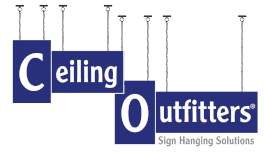By Robert F. Goodfellow
There is a lot of information available that provides practical advice to help minimize the chance of spreading SARS-CoV-2 (the virus that causes the COVID-19 disease). Infection control is about reduction of risk, not elimination of possibility. A broad, systems approach, with purposeful redundancy, is required. HVAC systems represent just one part of the equation.
According to Erin Bromage, Ph.D., Associate Professor of Biology at the University of Massachusetts Dartmouth, becoming infected requires an infectious dose of the virus. An infectious dose is a product of concentration and time. Some experts estimate that inhaling 1,000 infectious virus particles is enough for a virus to take hold. For a frame of reference, studies based on influenza suggest that normal breathing (at rest) releases about 20 viral particles/minute. Speaking increases respiratory droplet production to about 200/minute. So, a direct, face-to-face conversation could infect another person in about five minutes in the unlikely event that the recipient inhales all the exhaled particles from an infected person.
The SARS-CoV-2 virus itself is relatively small, in the ~0.15-micron range. When it is coughed, sneezed, or exhaled, it becomes part of larger 0.6 to 10+ micron droplet nuclei. The larger of these droplets will fall to the ground quickly and that is why there is a focus on social distancing. However, smaller droplets when aerosolized, can remain suspended and entrained into HVAC systems. According to the American Society of Heating, Air Conditioning and Refrigerating Engineers (ASHRAE), transmission of SARS-CoV-2 through the air is sufficiently likely that heating, ventilating, and air-conditioning systems should be controlled to reduce airborne exposure to the virus.
There are many different types of HVAC systems used in churches and educational facilities, so it is necessary to adapt these guidelines to specific cases. It is also recommended that those responsible for facility maintenance consider reaching out to qualified HVAC professionals for additional assistance.
General guidelines as it relates to HVAC systems include:
Inspection and Maintenance
Assessing the condition of systems that have not been running and making any necessary repairs before starting up systems.
Ventilation
Increasing outside air to dilute indoor contaminants is a first line of defense. For every cubic foot of fresh air that comes in, a cubic foot of potentially contaminated indoor air is exhausted. It should be noted that this approach is apt to increase utility costs in instances where it is necessary to heat or cool incoming ventilation air.
Air Filtration – Central HVAC
To the extent the coronavirus transmits from person to person by aerosols, improved air filtration can reduce the risk of transmission by reducing the concentration of infectious particles in the air. However, because improved air filtration in HVAC systems will not address short distance spread by large droplets, it cannot be considered to be a standalone solution to airborne infection control.
ASHRAE recommends MERV-13 rated filters if it does not adversely impact system operation. MERV, otherwise known as Minimum Efficiency Reporting Value, is a system used to evaluate the efficiency of an air filter based on how effective it is at catching particles of varying sizes. The higher the MERV rating, the higher the air filtration capabilities of a particular filter.
Generally, the larger the HVAC system, the more feasible it will be to upgrade to MERV-13 air filtration. Some systems will not accommodate MERV-13 or better filters either because of space within the system (e.g. ductless, mini-split systems) or because of system design. Many older systems that were installed without high-efficiency air filtration may lack sufficient fan horsepower to push air through denser filter media and/or long duct runs.
An upgrade to high-efficiency filters may have other effects on the HVAC system:
- Traditional high-efficiency filters have higher pressure drop than the standard filters they replace. Higher pressure drop means reduced airflow, which reduces heating/cooling capacity.
- Increasing fan speed to overcome the increased pressure drop and maintain original airflow will increase motor load, so it is important to ensure that fan motors will not be overloaded.
- Traditional high-efficiency filters may need to be changed more frequently which may be costly.
Even if filters are not upgraded to a minimum of MERV-13, consider upgrading filters to the highest MERV filter that will not compromise HVAC system performance. Further, it is very important that care be taken to seal any gaps or leaks that might allow air to bypass filters.
Portable Air Cleaners
Where MERV-13 filters cannot be used, including situations where there is no mechanical ventilation of a space, consider portable HEPA air cleaners for occupied spaces. HEPA stands for High Efficiency Particulate Air and HEPA filters range from MERV-17 to MERV-20. Portable HEPA air cleaners have a fan to pull air through the unit, a pre-filter, and a final (HEPA) filter. A recent report from the Harvard School for Public Health recommends a minimum of 100 CFM (cubic feet of air per minute) per every 250 square feet of occupied space. A typical classroom of 1000 square feet would require a minimum of 400 CFM.
UVC and Air Cleaning
Air cleaners such as germicidal ultraviolet light systems may also be considered to supplement ventilation and air filtration. UVC dosage is based on dwell time, proximity, and light intensity. Supplying a lethal dose instantly as droplet nuclei are expelled is not possible and supplying the necessary dose in the fast-moving airstream of a duct is difficult and has many variables. While duct mounted UVC systems can be quite effective at significant inactivation and reducing contaminant levels, it does not mean that all viruses in a space will be inactivated. UVC systems mounted in ductwork or HVAC systems should be used in conjunction with effective air filtration to ensure that inactivated pathogens are removed by the filters. UVC systems do not impose a pressure drop burden on the HVAC system. UVC lamps are usually replaced every year or every two years, depending on the type of lamps used.
Bipolar Ionization
Bipolar ionization breaks air down into positive and negative ions. The ions diffuse through the space and either react with or attach to particles. Reactions break down organic compounds to remove odors. Attaching to particles causes them to agglomerate into larger particles that fall to the floor or are more readily filtered. The following information should be evaluated when considering bipolar ionization:
- There are no industry standards or test protocols for bipolar ionization systems, so performance is not verified. There is some track record for reducing odors and destroying volatile organic compounds (VOCs), but solid data on killing viruses is scarce.
- Technologies and equipment should be carefully evaluated to ensure proper safety to systems and occupants. Some ionization systems produce Ozone as a byproduct. Ozone is a disinfectant, but it is also an irritant. Ozone attacks rubber and could lead to the deterioration of belts and gaskets in HVAC systems.
Humidity
Scientific evidence generally reflects the most unfavorable survival for microorganisms when relative humidity is between 40% and 60%. This is also usually the most comfortable level for building occupants.
Once again, infection control is about reduction of risk, not elimination of possibility. For additional information about mitigating infection transmission in HVAC systems, visit the COVID-19 resource pages at www.ashrae.org.
Robert F. Goodfellow, CAFS, is vice president of marketing with Dynamic Air Quality Solutions and an indoor air quality professional with over 30 years of experience in the HVACR industry. Dynamic Air Quality Solutions has been designing and manufacturing air cleaning systems for over 35 years and is known for high-efficiency particulate and gas phase air filtration with low pressure drop, www.DynamicAQS.com.





















